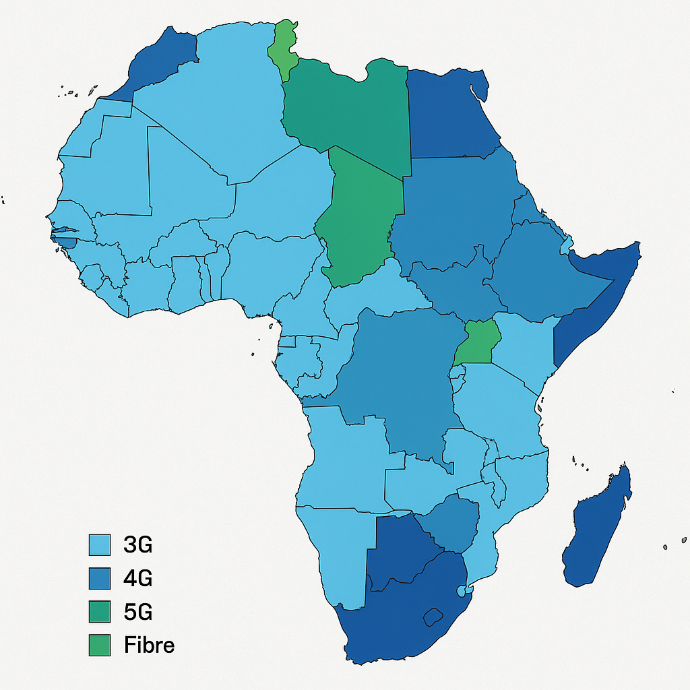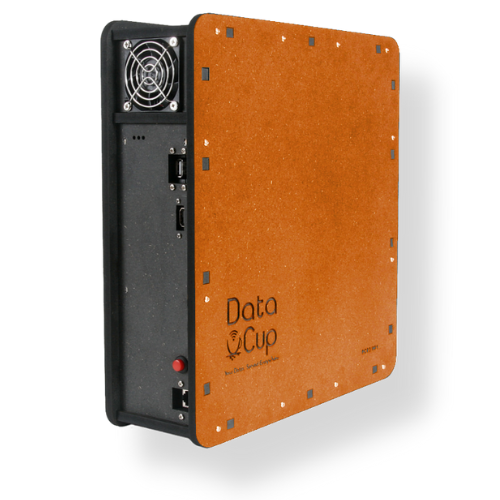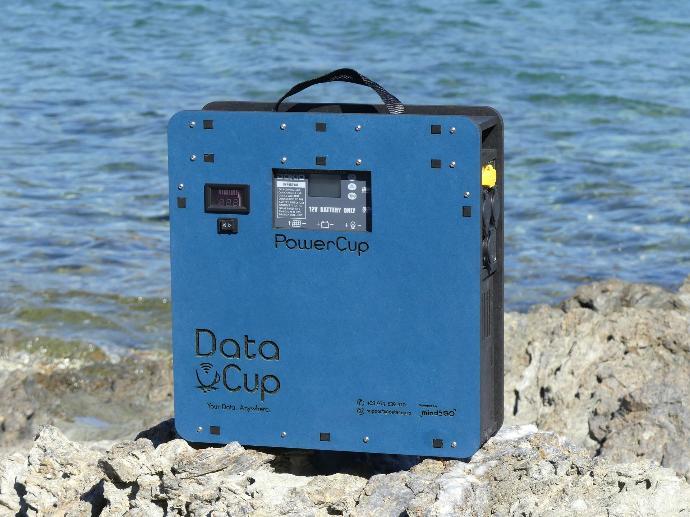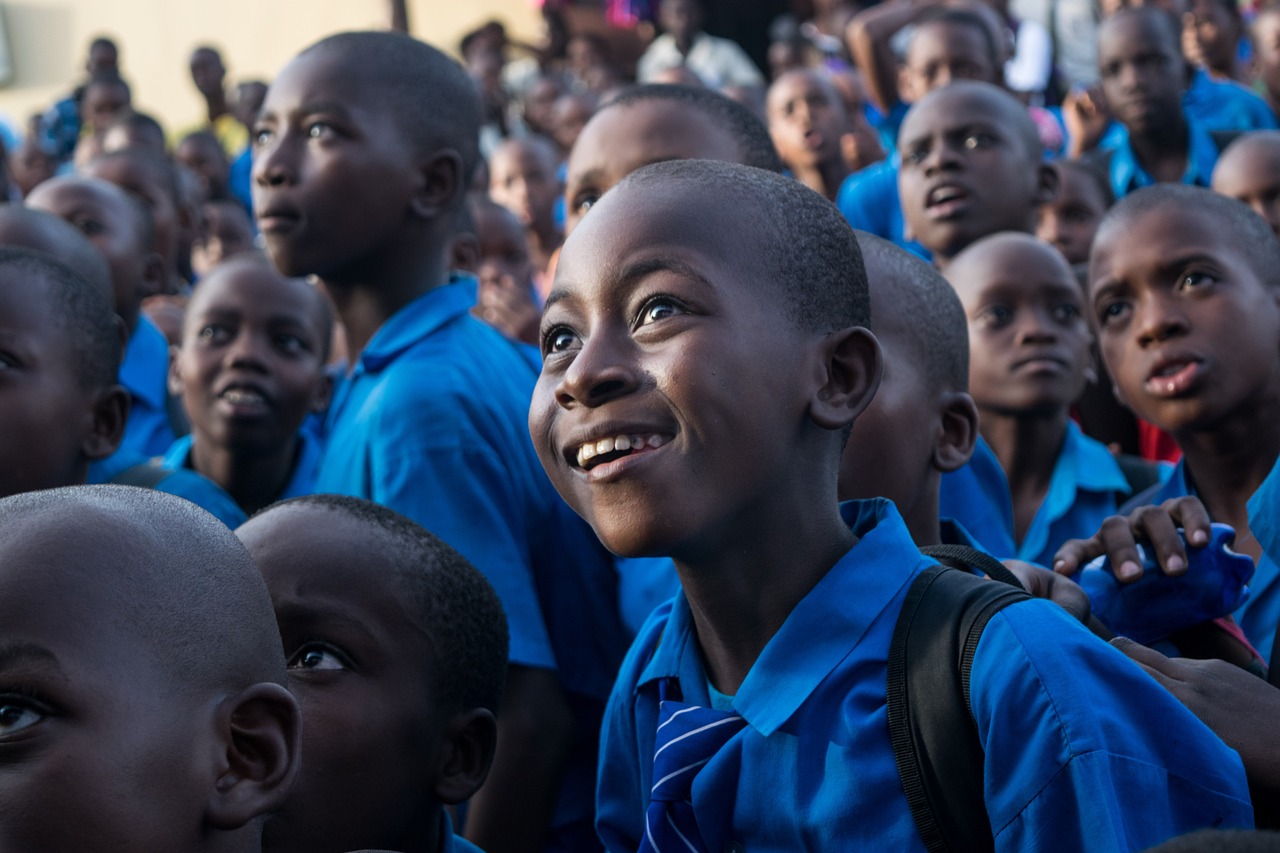Bridging the Digital Divide in Africa: A Key Challenge
Africa is undergoing rapid digital transformation. However, vast regions, especially rural areas, remain "white zones," without reliable internet access. This digital divide limits access to knowledge, hinders economic development, and exacerbates inequalities. While urban areas benefit from growing connectivity, rural zones are often left behind, deepening the gap between connected and unconnected populations.
DataCup aims to reduce this divide by providing innovative solutions to introduce digital resources to isolated communities in white zones across Africa, offering access to educational, cultural, and informational content without relying on traditional internet connections.

Internet Access in Numbers
In 2023, Africa had an estimated population of 1.46 billion, with around 803 million people living in rural areas, or nearly 55 % of the population
According to the GSMA’s The State of Mobile Internet Connectivity 2023 report in 2022, about 25% of the Sub-Saharan African population used mobile internet. This figure highlights a significant digital divide between urban and rural areas. In fact, adults living in rural areas are 29% less likely to use mobile internet than those in urban environments.
However, internet access varies significantly depending on the type of network and region.
- Fixed Internet (ADSL/Fiber):
Fixed broadband coverage remains limited, with only 3,3 subscriptions per 100 people on average in Africa in 2022. In Sub-Saharan Africa, this rate drops to less than 1 subscription per 100 people in many countries, particularly in rural areas. Ground infrastructure is mainly concentrated in large cities, leaving many rural areas without access to these services.
As shown by Paintmaps, in Tunisia, there are 13.7 subscriptions per 100 people, compared to 0.01 in Chad or 0.09 in the Central African Republic. These figures reflect a strong imbalance between North Africa, which is generally better equipped, and Sub-Saharan Africa, where fixed access is almost non-existent outside major urban centers.
- Mobile Internet (3G/4G/5G) :
Mobile coverage has improved, with increasing adoption of 4G, which represented 27 % of mobile connections in Sub-Saharan Africa in 2022, up from 18% in 2019. According to the GSMA, 4G could cover 97% of the population with political reforms and increased adoption. Currently, 4G covers about 84 % of the population in Sub-Saharan Africa, but adoption remains limited.
Regarding 5G, it is still in its early stages. As of 2023, only eight African countries had launched commercial 5G services (South Africa, Nigeria, Kenya, Zimbabwe, etc.), and projections estimate 180 million 5G subscriptions in Sub-Saharan Africa by 2029, accounting for around 12% of mobile connections.
According to the GSMA, North Africa had a 45% adoption rate of 4G in 2022, compared to 27% in Sub-Saharan Africa. In terms of coverage, North Africa is far ahead, with denser networks and more stable public policies, facilitating telecom infrastructure investments.
Regional disparities also exist in mobile internet costs across Africa. For example, in 2022, the average cost of one gigabyte (1 GB) of mobile data in North Africa was $1.05, while in Sub-Saharan Africa, it reached $4.47. These differences reflect significant gaps in infrastructure and pricing policies.
- Satellite Internet :
Services like Starlink have rapidly expanded in Africa. By May 2024, Starlink was operational in eight African countries: Nigeria, Kenya, Mozambique, Rwanda, Malawi, Zambia, Mauritius, and Zimbabwe, with additional expansion plans in place.
These services offer coverage in previously inaccessible areas, but their cost can be prohibitive for many rural populations. For instance, in Nigeria, the monthly subscription cost for standard Starlink service increased from 38,000 NGN (approximately $24.60) to 75,000 NGN (about $48.60) in October 2024. In comparison, the minimum monthly wage in Nigeria was 70,000 NGN (around $44) in July 2024. This means the monthly Starlink subscription is more expensive than the minimum wage, making it difficult for a large part of the rural population to afford.
Key Barriers to Internet Access in White Zones in Africa
Africa faces a significant digital divide, particularly in rural areas where internet access remains limited. While urban areas have better coverage, disparities persist between regions and types of connections (ADSL, mobile, satellite).
The main obstacles include :
- Insufficient infrastructure,
- High costs for internet subscriptions and equipment,
- The lack of a reliable power grid in many rural areas, which complicates access to digital technology.
DataCup offers an alternative ecosystem to traditional internet connectivity to overcome these challenges, relying on Offline Internet :
- Offline access to digital content with our innovative DataCup
- A decentralized content update system through our online management platform,
- A community-based approach and durable equipment to reduce the cost per user,
- An energy alternative with PowerCup
These solutions aim to enhance access to education and create economic opportunities in the most isolated regions, contributing to reducing the digital divide in Africa.
Improving connectivity could have a significant socio-economic impact, making education more inclusive and creating new economic opportunities, particularly in rural areas. With better connectivity, rural schools can access educational resources, and local businesses can connect to new markets, thus stimulating local development.
Development of ADSL/Fiber Infrastructure
The deployment of ADSL and fiber optic remains heavily concentrated in large urban areas, where population density justifies the investment. In rural areas, laying underground or overhead cables is expensive and technically challenging due to distances, terrain, and the lack of basic infrastructure.
The arrival of undersea cables, such as the 2Africa project, aims to improve the continent's connectivity. This project plans 46 landing points by 2024, strengthening international links. In fact, the last cable was laid in February 2025 in Mumbai. However, terrestrial deployment remains limited by geographical and financial obstacles. Even when undersea cables improve international connectivity, the "last mile" to homes remains a significant challenge.
From GSM to 5G
In Africa, mobile networks present marked technological diversity, ranging from 2G to 5G, with strong disparities between countries. For example, in Nigeria, Ethiopia, and the Central African Republic, 2G and 3G are still widely used, particularly in rural areas where infrastructure is limited. According to the GSMA, 2G coverage still reaches 94% of Africa's population, making it the most widely available mobile technology on the continent. However, 7% of the population lives in areas where only 2G is available, with no access to 3G or 4G. Furthermore, 25% of the African population has access to 2G but not to 4G, highlighting the continued importance of this technology for many users.
According to the GSMA’s The Mobile Economy Sub-Saharan Africa 2023 report, 4G represented 29% of mobile connections in 2022, with growth expected to reach 47% by 2030. Meanwhile, 5G is beginning to emerge: as of September 2023, 27 operators in 16 African countries had launched commercial 5G services, with further commitments in 10 other countries. However, 5G coverage remains largely confined to major cities. For example, in South Africa, 5G coverage reached 25% of the population in 2023. 5G is expected to account for 17% of mobile connections by 2030, contributing $10 billion to Africa's economy.
The installation of relay antennas, while essential to improving network coverage, faces several challenges in isolated regions: high costs, logistical challenges, and the lack of road or electrical infrastructure. Operators tend to prioritize more profitable urban areas, leaving many rural communities without adequate coverage. According to the UIT's 202, in 2023, only 39% of the population in low-income countries, mainly in Africa, had 4G coverage, while 3G remained the dominant technology in many areas.
Despite progress, challenges remain to extend mobile coverage across the continent. According to the UIT's 202 report, 14% of the African population still lacks access to broadband mobile networks, severely limiting access to the internet and essential digital services.
Satellite Internet Deployment
Additional constraints further complicate internet access
Services like Starlink now offer extended satellite coverage in several African countries, but they raise concerns related to digital sovereignty and technological dependency on foreign actors. Furthermore, the cost of installing the equipment and subscriptions remains beyond the reach of many rural populations.
The rugged terrain, dense forests, and vast sparsely populated areas make the installation of both fixed and mobile infrastructure costly and complex, as noted by Telecom Review Africa. Thus, investments are primarily concentrated in urban centers, which are more accessible and profitable, at the expense of rural areas that often lack adequate connectivity.
Additionally, even when infrastructure is available, the high cost of internet subscriptions and equipment (especially smartphones) presents a major barrier to adoption. This further exacerbates the digital divide between urban and rural areas.
The Prohibitive Cost for Low-Income Populations
Moreover, the cost of a fixed broadband subscription in low-income countries represents nearly one-third of the average monthly income, making internet access even less affordable.
According to the Worldwide Mobile Data Pricing report of 2023, the average cost of 1GB of mobile data in Sub-Saharan Africa is $3.31 (around €3.06), with significant disparities between countries. In North Africa, this cost is lower, at $0.86 (around €0.80). Some Sub-Saharan countries have particularly high rates: in Zimbabwe, the average price reaches $43.75 per gigabyte, with an average monthly salary of $354, while in Botswana, it exceeds $13 for an average salary of $880.7. In comparison, France offers one of the lowest rates, with an average cost of $0.16 per gigabyte. Only a very small portion of the African population has access to fiber optics and ADSL.
Although manufacturers are trying to reduce the price of smartphones, they remain unaffordable for much of the population. Indeed, the average annual salary in Sub-Saharan Africa remains the lowest in the world at $1,212. For instance, in South Africa, MTN launched an affordable 5G smartphone in November 2024, the MTN Icon 5G, priced at 2,499 ZAR (about $138), which represents over 10% of the average annual salary, to facilitate access to next-generation mobile networks.
Meanwhile, initiatives like the Dutch company Closing the Loop are working to reduce electronic waste in Africa. This organization collects used phones from several African countries for recycling in Europe, contributing to a circular economy and providing a source of income for thousands of local collectors. This model not only helps reduce the environmental impact of electronic waste but also promotes access to refurbished devices at a lower cost for local populations

Electricity Access Issues and Power Cuts
One of the main challenges remains access to electricity. As noted by Global Dev, only 50% of the population in Sub-Saharan Africa has access to electricity, with this figure dropping to 30% in rural areas. Without reliable energy, the use of digital technologies is severely compromised. Frequent power cuts, such as those in Nigeria, where power outages cause estimated losses of $ 29 billion per year. further complicate the situation. These outages are due to aging infrastructure, vandalism, and a lack of investment. In Senegal, electricity is unavailable for an average of 25 days per year, or more than two days per month. In Burundi, this figure reaches 144 days per year, nearly 12 days per month. This instability makes it difficult to use digital equipment consistently.
On top of energy supply instability, the high cost of electricity in many countries is another challenge. For instance, in Senegal, the average household electricity cost is €0.24 per kWh . Based on an annual consumption of approximately 417,5 kWh per person in 2023, this amounts to around €8.35 per month per person. With an average household size of 8 people in Senegal, this translates to a monthly electricity bill of around €66.80 per household.
Reports indicate that many schools in Senegal have access to the internet but are not connected due to budget constraints. For example, the Minister of Education stated that 785 public schools do not have electricity, suggesting that although some schools have the technical ability to be connected, they lack the necessary infrastructure, often due to financial limitations. Therefore, having theoretical access does not guarantee service availability or economic accessibility.
Our Innovative Solutions to Bridge the Digital Divide
Offline Internet: A Credible Alternative to Internet Access
Offline Internet represents an innovative approach to overcoming Internet access challenges, particularly in rural areas or developing countries. According to the Offline Internet Consortium, The Power of Offline Internet: Beyond the Binary of Connectivity, this technology combines tailored hardware and software solutions, localized content, digital skills, and supportive policies to offer significant access to a wide range of digital content without requiring a constant Internet connection.
Offline Internet is particularly relevant in Africa, where many regions face infrastructure and Internet access challenges. In this context, this technology represents a viable alternative to provide educational, health, and other essential resources to isolated communities, often far from high-speed networks. At DataCup, we are actively exploring Offline Internet solutions to help bridge the digital gap in Africa, enabling thousands of people to access digital content without needing a continuous Internet connection.
Access to Digital Content Without a Permanent Connection:
Given the Internet connectivity challenges in Africa, DataCup offers an innovative solution to bridge the digital divide in white zones. Unlike traditional solutions that mainly rely on online connectivity, we focus on offline access to digital content, ensuring reliable and sustainable access to educational, cultural, and informative resources.

DataCup is an innovative device that stores and delivers digital content locally, without the need for a permanent Internet connection. By storing thousands of documents, videos, books, and other resources, users can access diverse information even in areas where the Internet is almost nonexistent. Furthermore, even if data is already loaded onto the DataCup, you are free to select the data you want from the box and even add new data. It operates via a local network, enabling communities, schools, and organizations to benefit from virtual connectivity without depending on costly and unstable infrastructures.
Thanks to this solution, people in isolated areas can access educational, health, administrative, and cultural resources anytime, fostering their inclusion in global digital development. Whether it's schools in remote villages or NGOs operating in secluded areas, DataCup guarantees access to essential knowledge.
An Energy Alternative: PowerCup
As we’ve seen, access to electricity is also a major challenge. To address this, DataCup has developed the PowerCup, a solar energy solution that allows for charging DataCup and other devices in environments where electricity supply is limited or nonexistent.
This device is autonomous and captures solar energy to provide continuous power, even in the most isolated regions. This solution is especially suitable for rural communities where the lack of reliable electrical grids prevents the use of modern technologies. By ensuring access to a sustainable and renewable energy source, the PowerCup allows users to enjoy local connectivity without worrying about power outages or the lack of traditional electrical infrastructures.
Additionally, it serves as a backup power source during electricity cuts, ensuring uninterrupted operation of the DataCup and other connected devices. Moreover, in addition to powering the DataCup, it is equipped with USB ports to charge tablets and smartphones, offering a comprehensive energy solution for users’ digital needs.

Content Updates: A Decentralized Approach
Another major challenge in areas without stable Internet access is the regular updating of information and content. DataCup overcomes this problem with its decentralized update system. DataCup devices can be periodically updated through mobile relays or when traveling to better-connected areas. Thus, even without a constant Internet connection, the content on the DataCup is regularly enriched and updated, ensuring users have access to current and relevant educational and informational resources.
This decentralized update system offers great flexibility for organizations, enabling them to manage their digital library effectively without relying entirely on the Internet. This method is particularly useful in contexts where connections are rare or costly, as it allows for content synchronization at specific points without the need for a continuous connection.
A Simple and Accessible Solution for All
One of the major aspects of the DataCup solution is its ease of use. Designed to be intuitive, the DataCup allows users, even those unfamiliar with digital technologies, to easily access content stored on the device. Schools, NGOs, and local communities can quickly integrate the DataCup into their daily activities without requiring complex training. In fact, it only takes a button to turn it on, and you can navigate freely through its very user-friendly interface. Additionally, the device is designed to be durable and robust, making it suitable for environments with tough conditions. Equipped with a smart cooling system, it adapts to external temperatures and is completely airtight. Whether in hot, humid regions or in areas exposed to extreme weather conditions, DataCup is designed to function reliably and durably.
Ensuring Equal Access to Knowledge
Finally, one of the key solutions offered by DataCup is ensuring equitable access to knowledge and information. By providing a wide range of content, from basic education to specialized professional resources, DataCup enables users to enhance their education, improve their professional skills, and access vital information for the development of their communities.
This is especially important in contexts where access to textbooks, professional training, or health information may be limited. DataCup helps facilitate access to diverse and up-to-date knowledge, assisting local populations in closing educational gaps and improving the information available to them.
Socio-Economic Impact of Improved Connectivity
Improving connectivity in white zones in Africa could have profound benefits in various sectors.
A More Inclusive Access to Education

In the educational sector, improved Internet access would allow rural schools to access online teaching resources, thereby reducing the gap between urban and rural students. With equal educational opportunities, professional prospects would also become more equal. For example, the "iSchool Africa" initiative in Uganda introduced computers and online resources to rural schools, improving academic outcomes and providing teachers with tools for remote training. In areas like Kumi District, these efforts have opened up educational opportunities for children living in isolated areas.
Textbook availability remains a major issue in Africa, where both their availability and quality are often insufficient. To address this, UNESCO launched a project to improve the quality of textbooks in Francophone sub-Saharan Africa. This project involved evaluating 138 textbooks in countries such as Benin, Burundi, Madagascar, Niger, Senegal, and Togo. The goal was to strengthen the quality of educational materials and ensure they meet the needs of students and teachers. Workshops held in these countries allowed for recommendations on improving the production and dissemination of high-quality educational resources, contributing to a more inclusive and equitable education

DataCup also contributes to more inclusive education by partnering with major organizations like the BMCE Bank Foundation and SOS Children's Village to provide digital resources to students and teachers in rural elementary schools, addressing the lack of textbooks, educational resources, and interactive learning tools.
Creating New Economic Opportunities
Access to the Internet creates new jobs by allowing small rural businesses to connect to new markets. A notable example is the Mamaila community initiative in South Africa. With support from the Zuri Foundation and Kichose Technology, a pilot network was established, providing Internet access via three hotspots in two different villages.
This connectivity allowed residents of this rural area to access previously inaccessible economic opportunities, thus promoting local development and job creation.
Conclusion: A Sustainable Alternative for a Connected Future
In an African context where Internet access remains a challenge for millions of people, our solutions, such as the DataCup device and its PowerCup system, provide answers tailored to the specific needs of rural areas. These technologies allow bypassing obstacles related to connectivity and energy supply while ensuring continuous access to digital resources.
DataCup demonstrates that, even in the most isolated areas, it is possible to reduce the digital divide by offering an innovative and sustainable alternative. These solutions enable disconnected populations to access essential knowledge and information necessary for their development.